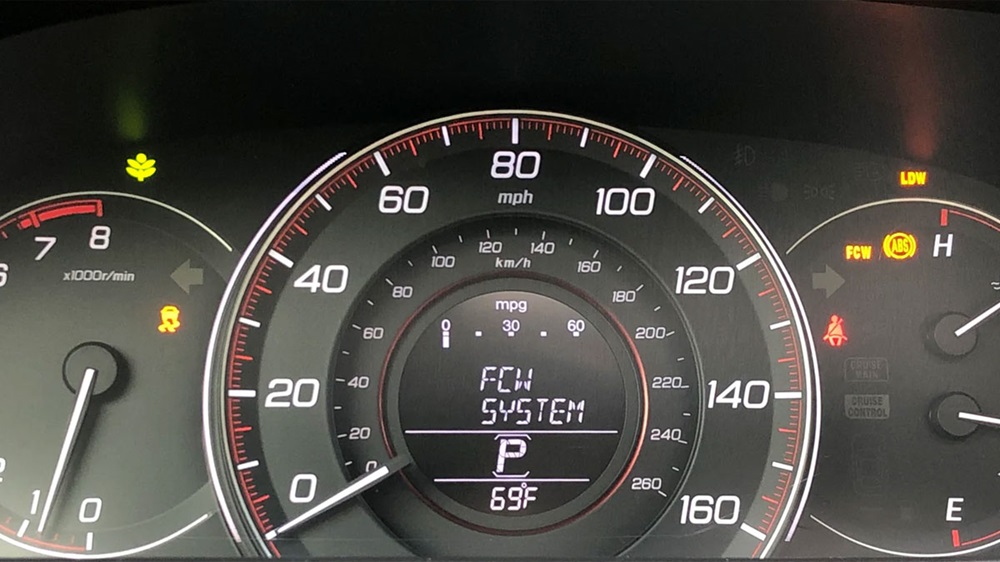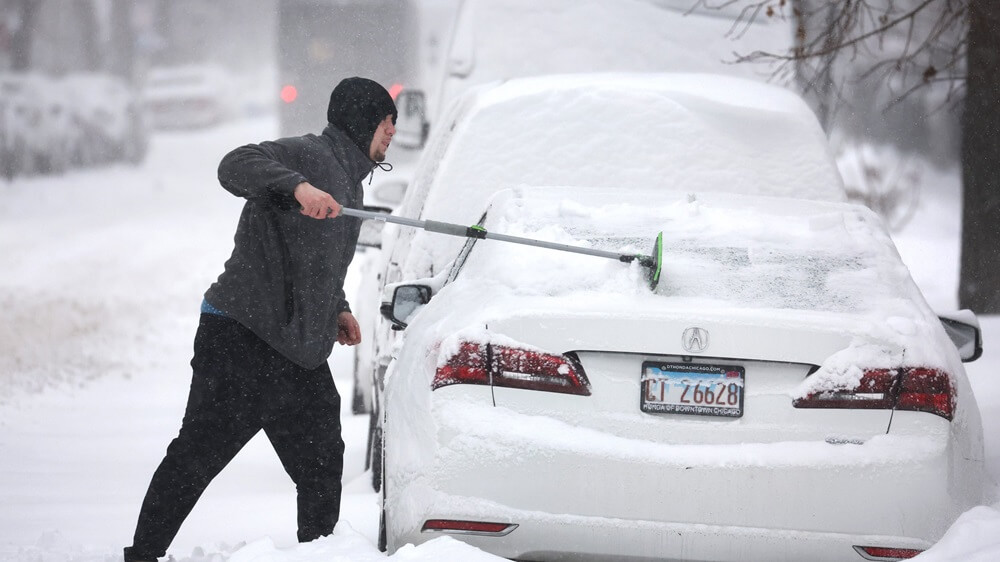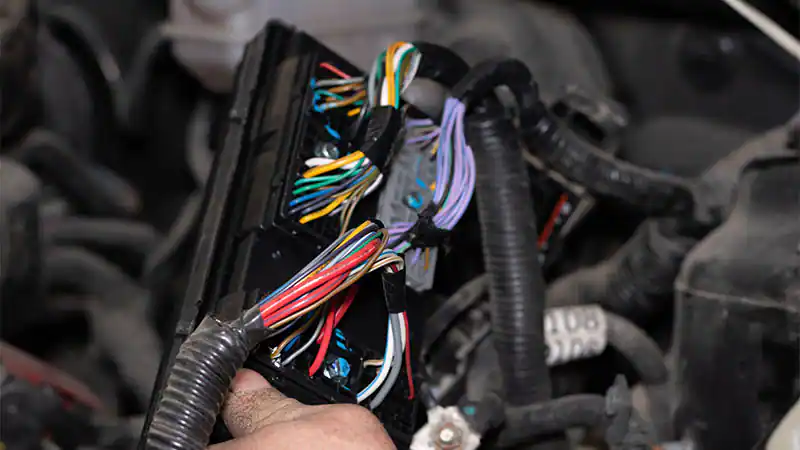Most of today’s cars have complex safety systems that might be confusing for those not familiar with them.
Several Honda users have reported issues with their Forward Collision Warning system, encountering a sign on the panel that says “FCW System Failed“. The Honda Accord, Odyssey, Crosstour, and other common cars are affected by this problem.
This article aims to provide a detailed explanation of why the FCW system may malfunction and the specific role of its sensors. Additionally, we’ll outline the most common causes of FCW sensor failures. The article also covers driving with a malfunctioning system and guides on how to reset or calibrate the FCW system.

What is the Honda FCW System Failed Warning?
The FCW system in Honda vehicles is designed to alert drivers about potential frontal collisions. Using sensors, the Forward-Collision Warning (FCW) system may anticipate when a collision is likely to happen.
These sensors may use one or more of the following: radars, cameras, or lasers. When the system senses that a collision is about to happen, It will alert the driver so that they can avoid the danger.
An alert can come in the form of a visual warning, steering wheel vibrations, or an alarm. Depending on the type of the vehicle, the brakes may apply themselves automatically if the driver does not respond to the signal.
With this warning, the driver needs to have enough time to respond and prevent an accident. So, where is the FCW sensor located? In most Honda vehicles, the Forward Collision Warning (FCW) sensors are located in the bumper or just behind the grille at the front.
4 Main Reasons for FCW Sensor Failure
1. Snow and Bad Weather Radar
Bad weather is a big reason why the FCW system often breaks down. If the system detects heavy weather (like rain or snow) and incorrectly predicts that a crash is about to happen, it could go wrong.

2. Camera or Sensor Scratch
Some things that might cause the FCW system to fail include driving on muddy roads or not washing your vehicle for an extended period. You will see this warning on your dashboard if the camera or radar sensor is coated with dirt or mud since it will prevent it from functioning correctly.
3. Common Deterioration
The sensors in your vehicle are subject to the same wear and tear as any other component. For that reason, it is essential to get the car checked out frequently. The sensors still need replacement, even if there isn’t apparent damage to them. Regular vehicle check-ups are important to identify and address potential issues before they escalate.
4. Faulty Sensor or Camera
Sensors or cameras may suddenly stop working without an apparent reason. Regardless of how well you maintain your vehicle. You should check if the camera or sensor detects unreal collisions or malfunctions and notifies you on the dashboard. Immediate repair is essential for your safety.
3 Steps to Fix the FCW System Failed Warning
Checking the sensors and wire connections, replacing the FCW module if necessary, or getting expert assistance from a certified technician or Honda dealership are all good ways to resolve the FCW System Failed problem.
1. Verify the FCW System Sensor
Checking the FCW system sensor is the method to resolving the FCW system failed message. Here’s a step-by-step procedure:
- To find the sensor’s placement in your specific type of car, I recommend looking in the owner’s manual or seeking assistance from a qualified technician.
- After you’ve found the sensor, check it for visible obstacles in its function, such as cracks, dents, or dirt.
- Use a soft cloth and the cleaning solution that Honda suggests to wipe off the sensor.
- Reconnect any cables or wires you find that are loose, disconnected, or corroded.
- To begin testing the FCW system, start the engine and see if the warning signals from front collision detection have improved when a vehicle is in front of you.
If the FCW system issues persist, you should have your vehicle inspected and fixed by an experienced mechanic or a Honda store.
2. Inspect The Wires and Connections:
The “FCW System Failed” message could be fixed by checking the wires and connections. Here’s how:

- Begin by turning off your car and opening the hood for inspection.
- Find the FCW system’s associated wiring and connectors, typically found near the headlights or front grille.
- Look for indications of wear and tear, such as damaged cables or disconnected components.
- If anything is loose, either tighten the connections or replace them as needed.
- Starting your vehicle once an inspection and any required repairs are complete will allow you to confirm whether the FCW system warning is still present.
3. Making Changes to the FCW System Code
If the FCW system isn’t functioning, you need to change the control module. Thus, this is the situation:
- Get your vehicle serviced by a Honda dealership or an authorized repair.
- An expert will examine the FCW system’s sensors, wires, and connections to identify the issue.
- If the problem lies, they’ll replace the control box.
- They will clear the FCW system of fault codes and reset it after replacing the control module.
- Ensure the FCW system is operational by giving your vehicle a test drive.
Make an appointment at your local Honda dealership for a thorough diagnostic check.
Similar Posts:
- Maint Reqd Light
- Service ESC Light
- Service Driver Assist System
- Parking Aid Malfunction Service Required
The Cost of Repairing the FCW System
The price depends on several factors, including the vehicle’s type, make, and the issue’s root cause. Repairing a low-cost, fuel-efficient vehicle is generally less expensive than a high-end model. Some high-end brands require specialized technicians, you must go to a dealership or repair shop authorized to handle your specific car type.
How Do I Turn Off My FCW Honda Accord?
| Issues | Solution |
|---|---|
| Check the Battery | Ensure the battery is charged and in good condition. If weak or dead, consider a jump start or battery replacement. |
| Inspect the Ignition System | Examine the ignition switch, starter, and spark plugs for issues. |
| Verify Fuel Supply | Confirm the vehicle has sufficient fuel. |
| Look for Warning Lights | Pay attention to dashboard warning lights, as they may indicate specific issues preventing your car from starting. |
Conclusion
Bad weather, a brake, or VSA module failure might trigger the FCW System Failed notice. For a factory reset, try updating the system or taking the battery out of the vehicle for 20 minutes. If this doesn’t work, take the car to a dealership so they can diagnose it properly.
Remember that this mistake may be avoided by consistently examining and servicing your Honda vehicle’s FCW system, practicing safe driving habits, and keeping the system clean.


![[FIXED] FCW System Failed Honda: Meaning, Causes & Service Cost FCW System Failed Honda](https://carstale.com/wp-content/uploads/honda-fcw-system-failed-1024x457.jpg)